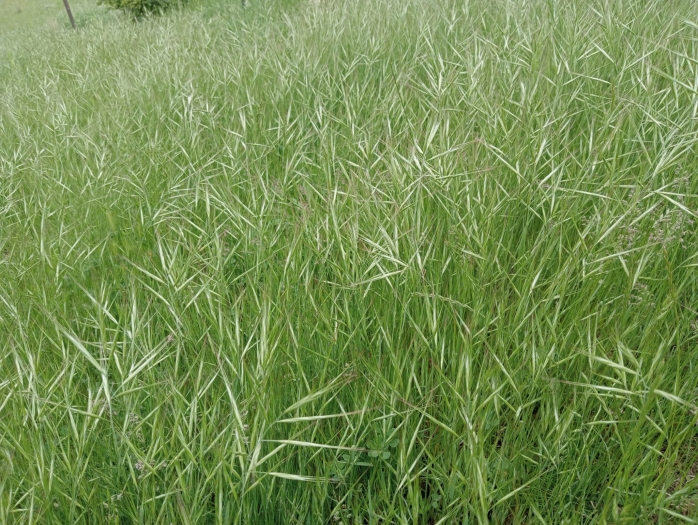Great Brome
(Bromus diandrus)
Great Brome (Bromus diandrus)
/
/

John Barkla
CC BY 4.0
Image By:
John Barkla
Recorded By:
Copyright:
CC BY 4.0
Copyright Notice:
Photo by: John Barkla | License Type: CC BY 4.0 | License URL: http://creativecommons.org/licenses/by/4.0/ | Rights Holder: John Barkla | Publisher: iNaturalist | Date Created: 2022-11-21T13:41:01-08:00 |











Estimated Native Range
Summary
Bromus diandrus, commonly known as Great Brome or Ripgut Brome, is an annual grass species originally native to the Mediterranean region. It has successfully naturalized in other parts of the world with similar climates, such as California and southern Australia. Great Brome typically grows to a height of 1 to 3 feet and features rough leaves and prominent white ligules. It is characterized by its upright form and produces seed heads that are both a distinguishing feature and a mechanism for its spread.
Great Brome is often considered a weed due to its invasive nature in non-native regions, where it can outcompete native vegetation and disrupt local ecosystems. It is not typically cultivated in gardens but may be found in disturbed sites, roadsides, and overgrazed pastures. In its native Mediterranean habitat, it is adapted to dry, open areas with well-drained soils. When grown in gardens or agricultural settings, it requires minimal water once established and thrives in full sun. Due to its potential for invasiveness, it is important to manage its spread by removing plants before they set seed.CC BY-SA 4.0
Great Brome is often considered a weed due to its invasive nature in non-native regions, where it can outcompete native vegetation and disrupt local ecosystems. It is not typically cultivated in gardens but may be found in disturbed sites, roadsides, and overgrazed pastures. In its native Mediterranean habitat, it is adapted to dry, open areas with well-drained soils. When grown in gardens or agricultural settings, it requires minimal water once established and thrives in full sun. Due to its potential for invasiveness, it is important to manage its spread by removing plants before they set seed.CC BY-SA 4.0
Plant Description
- Plant Type: Grass
- Height: 1.5-3 feet
- Width: 1-1.5 feet
- Growth Rate: Rapid
- Flower Color: N/A
- Flowering Season: Spring
- Leaf Retention: Semi-deciduous
Growth Requirements
- Sun: Full Sun
- Water: Low
- Drainage: Medium, Fast
Common Uses
Erosion Control, Low Maintenance
Natural Habitat
Originally native to dry, open areas with well-drained soils in the Mediterranean region
Other Names
Common Names: Ripgut Brome, Cheatgrass, Broncho Grass, Giant Brome
Scientific Names: , Bromus diandrus, Anisantha diandra, Anisantha diandra, Anisantha diandra, Anisantha diandra subsp. diandra, Anisantha gussonei, Anisantha macranthera, Bromus ambigens, Bromus asperipes
GBIF Accepted Name: